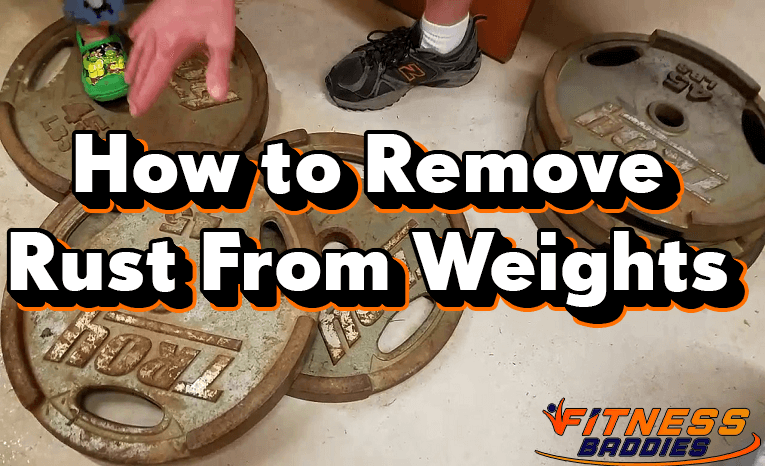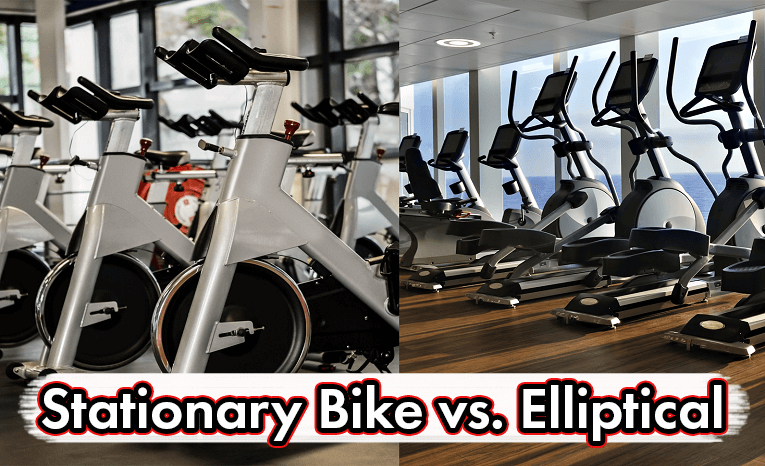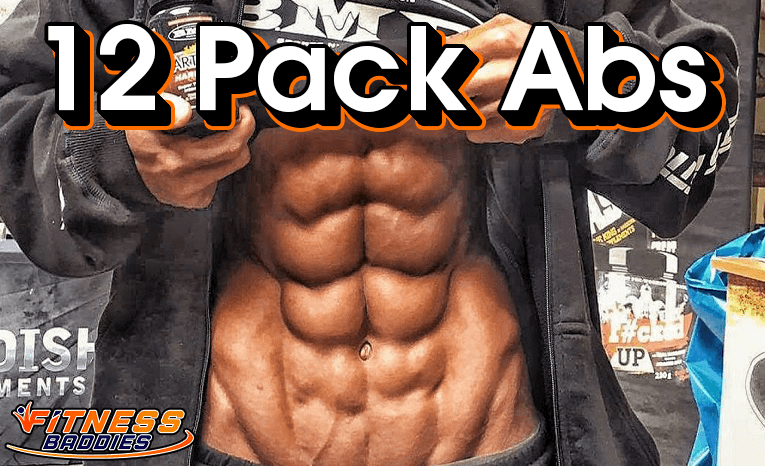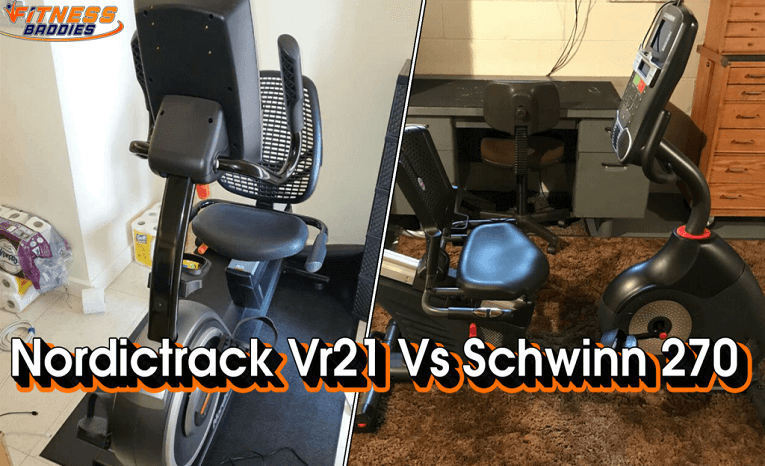“But squats are still scary….” and Why You Are Not Seeing the Squat Booty You Were Promised
SEPTEMBER 9, 2012 BY FITNESSBADDIE
Squats. My fave topic.
The Squat Booty
I listen to and hear many frustrations when it comes to squatting. I work with people who squat in all kinds of strange ways with all kinds of weird body mechanics. As I continue squatting and taking the time to really pay attention to what I (and they) do when squatting, what I think I do, and what I want to do, the insights keep piling up. Nothing I will say is “new” or revolutionary, but the problem I keep coming across is that the same cues and explanations still don’t “click” with some people. You read and read, and watch videos and videos and yet when it comes time to put the bar on your back you still feel like a scared kitten (you should always be a bit scared, but the right kind of scared). This blogpost might fall into the category of more “useless” (useless cause its written and I m not standing next to you), but if it at least gets 1 person to make the “click”, hey it’s all good. It’s especially hard if you are stuck without a trainer in your face watching your movement patterns and seeing you in your entirety, cueing you at the right moments and helping you push through the hard ones. I have great difficulty coaching myself, much less MID-SQUAT! Sometimes I’ll film my set and then be like “FUCK I DIDN’T REMEMBER TO CUE MY ELBOWS UNDER”. Its really hard to get everything moving well, WITH weight, WITH good form, WITHOUT fear etc etc. That’s another reason I always say
“If you had to pick an exercise to really learn well, put your energy into learning the squat”
From my point of view in training athletes, perfect form is not always necessary. WHAT??? JOY OMIGOD!!!!!!! Hahaha, you never want to voluntarily have shitty form or learn shitty form, thats not my point. The point is that when training athletes in particular, you need them moving enough in the right ways to get the results you are looking for. Spending hours perfecting form is not always necessary or expedient. But that is beside the point. For most of us looking for that typical “look good nekkid” prowess, squatting with really good form will pop that booty out, tighten abs and get those legs strong and aesthetic. Everyone is used to hearing the “What should I do for legs and butt?” And someone yells (if on FB, that would be in caps. Guilty as charged.)
SQUAT! SQUAAAAAAAAAAAAAAAAAAAAAAAAAAT!
Yes. You should. So you do. Up and down, up and down, add a bar (AGHHHHH I SANDWICHED TO MY KNEES), let’s try goblet, up and down, box? bodyweight? And yet for that pumping up and down the promised legs and ass are not materializing. Wheres that squat booty you promised me?????? Why can’t I add weight without feeling like a little bitch? Why do I lose it on the bottom part? I think it all boils down to
Using your hip as a hinge
Understanding Knee to Ankle to Hip mobility and angles
Very few people, even decent squatters (some can get away with it better than others) do not realize their full hip hinge potential (when I say decent here, I am defining it as someone who goes below parallel, whose strength to bodyweight ratio for squatting is (1.5-2.0x bw), and who has enough good mechanics that they are not injuring themselves regularly). I didn’t even get the hip hinging and glute firing REALLY down till recently. And I am still working on it. Do not fear though, spending time to learn this will solve 90% of your frustration with squats (not to mention do wonders for any back pain). Ankle mobility/flexibility is another thing that is often ignored. Ankle tightness is directly related to calve tightness. When is the last time you rolled your calves out or worked on ankle mobility???? Most people “know” that they need better hip flexibility (though this is often a vague concept even with all the explanations out there), but what about your ankle? What is your knee joint doing in relation to both? Maybe I can shed some light on these questions.
The first thing I want you to do is:
1. Think about your hip as a hinge and what that means = getting the ball moving in the socket vs the knee wiggling around, and the knee being pushed forward AS A RESULT of improper weight distribution rather than the weight staying centered (this is different from your knee coming forward in a deep olympic style squat in which the weight stays centered properly).
Despite “knowing” that our hip is a hinge, it takes concious practice to use it as such. What does a hip do? It opens and closes something. Your hip is like opening a book. The top half of the book is your torso, the bottom half is your thigh. The spine is the hip hinge. No matter how many times I might cue someone to “break at the hips” to start a squat, you need to be thinking about it FOR EVERY SINGLE rep. You need to start closing the book. Thats why I recommend that you ignore a lot of progressive overload on your squat until you have this hip movement down pat. Its another reason why I also recommend slow light squats to learn the movement pattern. You can overload your legs for strength growth in other exercises, but your squat will stall fast and be frustrating if you don’t understand how the hip moves! Try this. Bring your knee up to your chest WITHOUT curving your back forward, now lower your leg all the way back down. If you kept your chest up, the knee was bending as a result of the movement (unless you are a ballerina and automatically and easily kept your leg straight), but the movement (the ball rolling in its hip socket up to your chest and back down) was from your hip joint. If you could not get your knee up to your chest very far before you started to hunch over, your hip mobility is lacking. Here is a video about hip/pelvic/lumbar structure and it’s mechanics. This is a bit longer, but very helpful for allowing you to “visualize” what you want your body to be doing. While I don’t expect everyone to get excited about the particulars, it is helpful (in the absence of a good trainer) to do a bit of self-education about how your body moves to not only optimize your results (SQUAT BOOTY PLEASE) but to stay safe and effective for years to come!
The absolute best video (I don’t feel I could improve on it, though it might be more entertaining for some to watch me hip hinge) on this, that is easy, especially for inexperienced squatters, but also as a cornerstone of the basics is again Bret Contreras. I link this video endlessly, because I believe in its absolute importance for ANY exercise program. ANY!
If you do not take the time to get the hip hinging properly, you can kiss squat masterdom goodbye. EVEN if you are never a fabulous squatter (and I have seen vids of some rather popular people working out and squatting heavy with less than optimal form, some buttwinking, bar tracking forward etc, BUT they all apply this concept nevertheless), the more you can teach your hips to move properly, and/or fix their movement, the better you will be at squatting (and tons of other stuff too!). Now for the money sentence:
Proper hip hinging produces that deep “stretch” of the glute and hamstrings at the bottom of the squat (combined with the absence of buttwink or loss of lumbar curve), and allows those muscle to be used properly, WHICH IS WHERE YOU GET SQUAT BOOTY FROM!
Please tell me that motivated you horribly. Who doesn’t want squat booty???????? (And really, have you guys figured out that you should just watch and read EVERYTHING Bret has to say about this. Expert on it all fyi. Bret, if you happen to read this humble post, hope you don’t mind me basically parroting you a lot, heh.)
My squat booty. A work in progress!
Second money sentence.
With the proper use of those glute and hamstring muscles, and that firm “sitting back” position, the squat feels much more stable, and getting out of the hole is less a matter of “shiiiiiiiiiiiittttttttttt get the weight up however fucking possible” to “I’m gonna work hard, but my thick and strong hammies and glutes are being put to proper use, this weight is going up”. The result is that squats are = less scary. Below is a 1.5 minute video of Bret teaching a “sit back” drill.
Try this. Get off your chair and do a bodyweight squat. Hold it in the bottom position or “the hole”. Adjust a bit to get your back straight, weight in the heels, knees wide etc. All that stuff you know you are supposed to be doing? How does it feel? Comfortable? Can you bounce up and down on your hamstrings a bit? Could you sit there for a few seconds comfortably?? If the answer is no, you need to work on your “sitting back” position, or your hip hinging that GETS you into that position, or coming down with 200lbs on your shoulders better be too scary. And it is scary if its not your hips that are taking the load. Hips are meant for load! Knees are not. Right there we have food for thought for two of the main problems. Scary squats, and bootyless squats. I start everyone off box squatting, even if I can tell they won’t have much problems learning the squat. Mainly because sitting back like that is very “mental” (we either think or FEEL that we will fall over, and some people do, so having a bench there makes sense) and because it allows them to have a point and depth to aim for, especially for those who WILL fall back initially.
My fave assistance exercises for getting hip hinging down?
– Modified Romanian Deadlifts (shorter range of motion, butt strictly controls the movement)
– Back extensions on a GHD machine (ignore the squiggly ones at the end, those are a variation)
– Box squats
– Single leg hip thrusters (no weight, just on the floor)
Next point:
2. The shortest distance between two points is a straight line. How are my hip, ankle, knee and back angles helping accomplish this goal?
Greg Everett in Olympic Weighlifting for Athletes says “Depth (you need depth to use the glutes and hams properly) is measured by the position of the hips, and the depth of the hips is governed by the position of the knees, the degree of dorsiflexion (more on this later) of the ankles, and the absolute and relative lengths of the upper and lower leg (more on this again). These factors are largely interdependent, and a change in one will typically effect change in others.”
An efficient bar path means all your energy is being directed to pushing the weight up, rather than it being eaten up here and there because your center of gravity shifts too much during the lift. An easy way to see this on yourself is to film your squat from the side, and trace the line the bar takes with your fingers. Does it move straight? This is never more evident then when you watch olympic lifts in slow motion, from the side, with the computer generated “bar path” line showing. The best lifters are the most efficient. No energy is wasted “recovering” the bar from a wobbly path. From floor to overhead, the bar moves in as close to a straight line as possible. Olympic moves require tremendous speed, a regular squat does not, but the same rules apply. An efficient bar path will make for a strong squat.
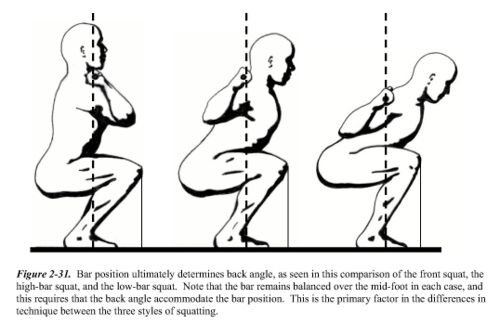
An efficient bar path keeps the weight centered. Your angles move to keep the bar on this path. This means proper flexibility at the hip, and ankle joints specifically, with the knee joint hinging normally and fully and not being required to “share” the load because the hips are out far enough to take the load.
Crucial to this is how your hips, ankles and knees interact with eachother. Basically your body angles are going to adjust around the bar as it comes down, rather than you adjusting the bar to your imbalances. That is one of the BEST reasons as to why you SHOULD NOT use a smith machine for squatting. The smith machine takes aways all necessity to learn the right angles and stability to gain strength because the bar stays in its fixed path, and doesnt make you WORK to keep it in its fixed path. When you have shitty mechanics in a real squat, you’ll KNOW IT! With a smith machine, nothing happens. You can go up on your toes, or lean back into it or whatever. That’s why, unless you have a very specific reason to be using the smith machine (mimicking hack squats for quad isolation?) and it is NOT enhancing your bad mechanics…. it could possibly be used. But really, the safest thing to say for good 99% of the population is stay away from the smith, and do your body a favor by learning the movement patterns, balance and strength needed for a real squat.
How do you know if the bar is moving straight? How do I coach myself to do this? Well, assuming you are taking the first part of this post to heart (which is the basis for a good squat) my next tip is THINK IT. Think about moving the bar straight. What does this mean
1. As you come down you will have to fight the urge to let your chest fall excessively forward. To keep the bar from “pushing” your back down, get your shoulders tight, squeeze your back muscles together, hold the bar firmly in place sandwiching it between your hands and your traps (shoulders) and KEEP IT THERE. Your back should stay in tight contraction and be an active part of the squat movement. Taking the upper body musculature “out” of the squat with bad posture or a relaxed upper body, means you are missing out on additional muscles to provide energy in getting the bar moving. On the way up, to keep that “straight” line idea, it will mean pushing up against the bar with your back as well as your hips.
2. You will have to work on pushing your butt/hips out as far as possible to feel as balanced as possible WHILE you are attempting to stay straight. Remember those angles? Your hips are the big balancer here. The further you can get them out, and keep that weight centered, the stronger your squat will feel, and the more you will be using your big muscles to move the weight. Much better than coming down with sketchy form and using sketchy form to save yourself from a scary squat.
3. Maybe its your ankles.
Ankles get overlooked because, well, they are all the way down there, and everyone pays so much attention to knees and butt. Tight or inflexible ankles can affect lots. Why? Greg Everett says:
“Inadequate ankle flexibility can also result in the knees remaining too far back (assuming the the heel stays on the ground with an attempt to keep the center of gravity in the mid-end of the foot)- if the ankles are unable to dorsiflex (bringing the toe towards the calf, or vice versa in a squat where the heel remains on the floor) to a great enough degree, the lower leg cannot reach an angle sufficient to bring the knees into a position that allows the hips to reach their intended placement.”
Maybe your ankles need some stretching. The big thick achilles tendon is attached to your calve muscles.
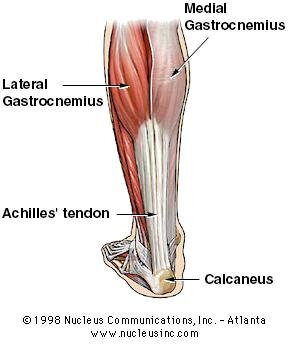
1. Try foam rolling your calves and including calve stretching/warmup into your pre-squat warmup. Anything that involves jumping uses your calves. Personally I like the downward dog stretch, with some lacrosse/foam rolling.
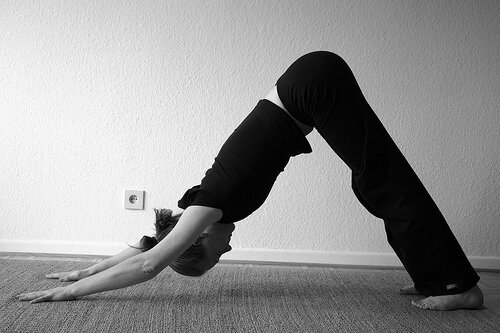
The aim is to keep your heels on the ground. You can also alternate from toe to toe to stretch.
2. Get into your “bottom of the squat position” like the vid below. But instead of just sitting there (which is a good stretch too, because you are keeping your heels down, and getting all the way into that position that requires the dorsiflexion of the ankle), shift the weight over to one foot (KEEP THE HEEL DOWN!) hold for 20 seconds, move to the other one. Do this several times for each ankle. This WILL put some pressure on the kneecap, so watch out if you have really bad knees (which I do, but I can do it fine, as long as you don’t do some exaggerated shift).
Remember that flexibility and mobility need to be worked on. Its not gonna just up and happen because of “oh I did foam roll the other day”. Make it a part of your warmup. Check out my youtube channel for videos on hip stretches/openers. I filmed most of my fave ones, and do them pre-squat and on rest days if I take some time for mobility. Really work at your hips! Like anything it takes consistency and patience, but its worth it! You can have the squat booty that was promised, not to mention how much good hips benefits all exercise.
And last but not least:
4. Cue your Glutes! Bret said this perfectly, so I’m just going to quote him
“Getting people to think “glutes” during hip extension exercises (squatting, deadlifting, thrusting etc) is crucial in my experience if the goal is to maximize gluteal activation and hypertrophy. This is what a vast majority of my clients approach me for, and I try my best to deliver maximum results.
I tested a female squatter who could full squat 185 and lunge with 50 lb dumbbells, and her mean glute activation was around 10% of MVC on each movement. She was relying on the quads to squat and lunge, and her form appeared excellent (I can relate to this). It’s no surprise that this same individual tended to hyperextend her spine (THIS WAS ME!) when performing back extensions and struggled to dissociate her pelvis from her spine (hips MOVE in their socket, spine should not be moving around aka flexing/extending) and couldn’t hold a posterior pelvic tilt.
Glute activation and glute cueing has done wonders for this client over time. This female isn’t the exception; she’s the norm! Most people don’t use the glutes optimally. Most advanced individuals don’t even use their glutes to their fullest extent in my opinion, and many leave room on the table for increased performance.
Some clients learn how to fire their glutes during various exercises rather quickly, whereas others can take two months to learn how to really feel their glutes working during various exercises. This occurs following consistent internal cueing and attentional focus toward feeling the glutes maximally activate during resistance resistance training.”
P.S. For anyone working out from home, the same still applies! Even if you are not going to be using a barbell (kettlebells, dumbbells or bodyweight), everything is still the same. For those using bodyweight, to work your legs well enough, you will have to progress to higher reps and harder variations like single leg squats, jump squats, etc, all of which need the same good form and glute/ham activation to get the right effects.
Happy Squatting!
